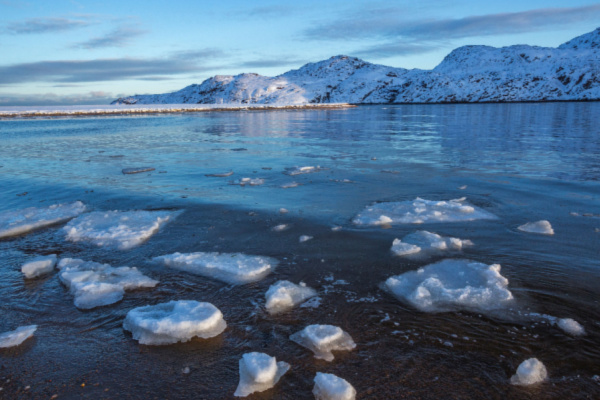New Finnish-Norwegian research published on August 11 reveals that Arctic global warming is happening nearly four times as fast as the entire globe. It’s a phenomenon known as “Arctic amplification.”
“We show that during 1979-2021, the Arctic has warmed nearly four times faster than the globe, and provide evidence that climate models struggle to simulate this four-fold Arctic amplification ratio,” the researchers wrote. According to UPI, November research found that the Arctic Ocean has been warming four times faster than the rest of the planet since the beginning of the industrial age at the start of the 20th century.
The study scientists said their research cautions that referring to Arctic warming as being twice as fast as the global warming rate is “a clear underestimation of the situation during the last 43 years since the start of satellite observations.” The study also stated that, “results indicate that the recent four-fold Arctic warming ratio is either an extremely unlikely event, or the climate models systematically tend to underestimate the amplification.”
“It’s a really vulnerable environment in the Arctic, and seeing these numbers, it’s worrying,” said Antti Lipponen, a scientist with the Finnish Meteorological Institute who contributed to the study. The collaborative study was done by scientific researchers at the Finnish Meteorological Institute, the CICERO Center for International Climate Research in Oslo Norway, and the Department of Applied Physics at the University of Eastern Finland.
“During 1979-2021, major portions of the Arctic Ocean were warming at least four times as fast as the global average,” the study said. “The most extreme AA values occur in the sea areas near Novaya Zemlya, which were locally warming up to seven times as fast as the global average.” The study said those high warming rates are consistent with recent research. The primary reason for such high Arctic Amplification values, the study said, “is the reduction of cold-season ice cover, which has ben most pronounced in the Bering Sea.”
There is growing evidence, too, to suggest that the unique structure of the Arctic Ocean could be shifting in this region. Scientists have uncovered “hotspots” where some parts of the Barents Sea are starting to more closely resemble the Atlantic. They call this phenomenon “Atlantification”. The extent of Atlantification across the Eurasian Arctic Basin and its possible impact on the wildlife that follow ocean currents are active areas of research. Though the overall scale and impact of Atlantification is still unclear, it could be pushing parts of Arctic towards a climate “tipping point,” a possibly irreversible and self-reinforcing change in the climate system. As well as impacting sea ice levels, it is possible that Atlantification could pose concerns for the unique wildlife that inhabit the Barents Sea region.
Scientists have observed a rapid decline in ice cover above the Barents Sea in recent decades. According to NASA data, the total area covered by sea ice in this region has fallen by almost half since satellite records began in the early 1980s. (Much of the sea ice found in the Barents Sea is blown in from the central Arctic.) This disappearance of sea ice could be sparking a shift in the structure of the ocean beneath, research suggests. One possible reason for this is that, when sea ice melts through the summer, it replenishes the freshwater layer that sits above the warmer Atlantic layer. With less sea ice around, the amount of freshwater dwindles, causing the definition between the ocean layers to weaken. This, in turn, causes the ocean to mix together, drawing more Atlantic heat up towards the surface. This “Atlantification” can, in turn, cause more ice to melt from below.
A key possible driver of Atlantification in the Barents Sea is the disappearance of sea ice from atop the ocean. However, once sparked, Atlantification causes further melting of sea ice, which could, in turn, lead to more Atlantification. However, there is still much for researchers to understand about Atlantification and how it relates to other ocean processes – making it difficult to say whether Atlantifcation is truly a self-reinforcing “positive feedback”, says Dr Michel Tsamados, a sea ice researcher from University College London:
“This change of pattern in the Barents Sea could be viewed as a tipping point because it appears to be irreversible, at least on the scale of a few years. But, if we were to cool the Arctic for 50 years, it’s possible sea ice would return and these changes would reverse. Without more research, it’s hard to say.”
—
Photo Credit: Crazy nook / Shutterstock.com
